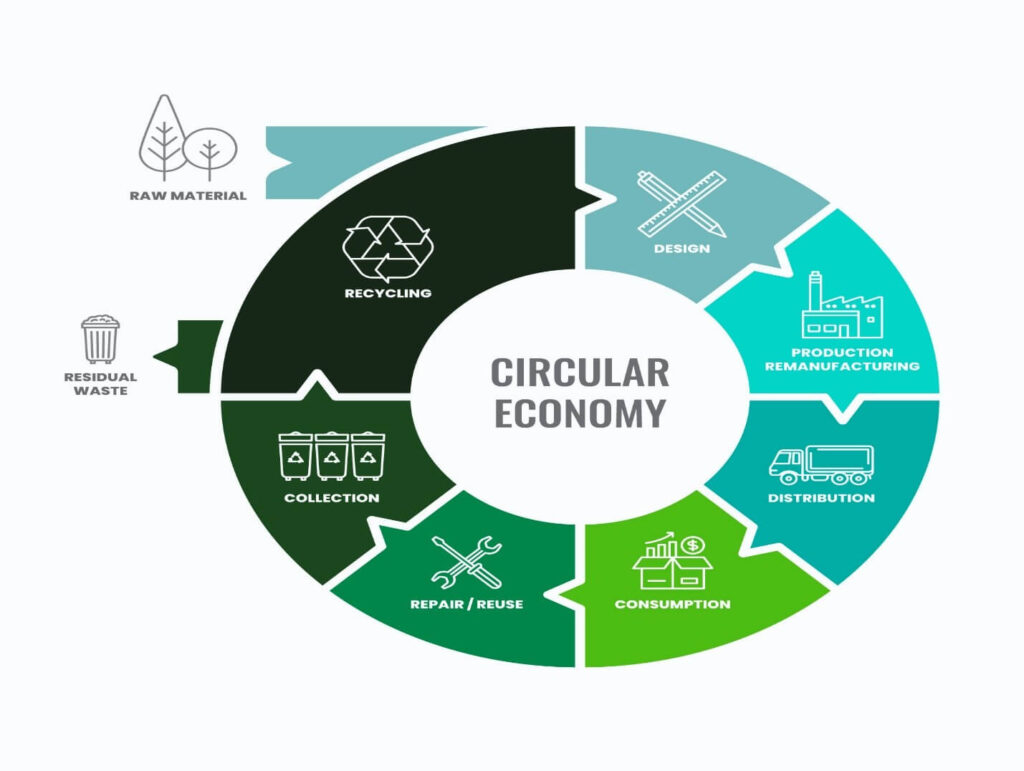Circular design products are designed to use materials more efficiently, reduce waste, and create a closed-loop system. Dassault Systèmes for a circular economy model makes that products can be recycled and reused, leading to a decrease in the amount of resources consumed and a decrease in environmental impact. This type of design is becoming increasingly important for creating a more sustainable future.
Circular design products are a new trend in sustainable manufacturing that aims to reduce waste and promote a circular economy. These products are designed to be reused, recycled, or repurposed rather than thrown away after use.

Table of Contents
How Circular Design Products Work And Why They Are Creating A More Sustainable Future?
What Is A Circular Economy?
A circular economy is an economic system that aims to eliminate waste and promote the continual use of resources. In a circular economy, products are designed to be reused, recycled, or repurposed rather than thrown away after use.
This approach helps reduce waste and conserve resources while creating new opportunities for businesses and consumers. Circular design products are a vital component of a circular economy, as they are designed to be part of a closed-loop system where waste is minimized and resources are conserved.
What Are Circular Design Products?
Circular design products are designed with the principles of a circular economy in mind. They are designed to be reused, recycled, or repurposed at the end of their life cycle rather than being thrown away.
This means that the materials used to make the product are carefully chosen to ensure they can be easily disassembled, reused, or recycled. Circular design products are also designed to be durable and long-lasting so that they can be used for as long as possible before needing to be replaced.
By creating products that are part of a closed-loop system, circular design products help to reduce waste and conserve resources while also creating new opportunities for businesses and consumers.
Circular design products are becoming increasingly popular as more and more people become aware of the need to reduce waste and protect the environment. These products can take many forms, from clothing made from recycled materials to easily disassembled and reused furniture.
What Are The Examples Of Circular Design Products?
Circular design products come in many forms, from clothing made from recycled materials to furniture made from repurposed wood.
One example is the Adidas Futurecraft Loop, a running shoe made entirely from recycled materials that can be returned to Adidas to be broken down and reused in new shoes. Another example is the Dutch company Fairphone, which produces easily repaired and upgraded smartphones, reducing the need for frequent replacements.
Another example of a circular design product is the Upcycling Collection by Patagonia, which takes old, worn-out clothing and turns it into new, stylish pieces. The company also offers a repair program for their clothing, encouraging customers to keep their items in use for as long as possible.
The Loop Scooter by Loopwheels is another example of circular design, featuring wheels made from recycled materials and a design that allows for easy disassembly and repair. These products reduce waste, promote sustainability, and offer unique and innovative solutions to common design challenges.
What are the Benefits Of Circular Design Products?
Circular design products offer many benefits for both the environment and the economy. By reducing waste and conserving resources, they help to create a more sustainable future.
They also create new business opportunities, such as developing new recycling and repurposing technologies. Circular design products can also save consumers money in the long run, as they are designed to be durable and long-lasting, reducing the need for frequent replacements.
Overall, circular design products are a vital component of a circular economy and are essential for creating a more sustainable and prosperous future.
How to Support Circular Design Products?
One way to support circular design products is to prioritize purchasing products made from recycled or repurposed materials. Look for companies that prioritize sustainability and circularity in their manufacturing processes.
Additionally, consider repairing and upgrading products instead of immediately replacing them and adequately disposing of products at the end of their life cycle to ensure they can be recycled or repurposed. We can help create a more sustainable and circular economy by supporting circular design products.